In conversation with…
Joe Bradley and Tobias Pils
The exhibition Joe Bradley – Tobias Pils opens at Capitain Petzel during Gallery Weekend *Discoveries 2021 and marks not only the American artist Joe Bradley‘s debut in the Berlin gallery, but also the first time the two befriended artists’ work is being brought into dialogue with one another.
At first glance, two opposing practices collide in this show of new paintings and drawings – Bradley’s explosive and colorful abstract paintings meet Pils’ grey-toned, suggestively figurative scenes. On closer examination, surprising similarities and contrasts reveal themselves between their respective individual and unique practices.
Here, the artists discuss the themes and ideas that run through these new bodies of work, the process of working together on this show, and the foundational similarities which connect them and their practices.
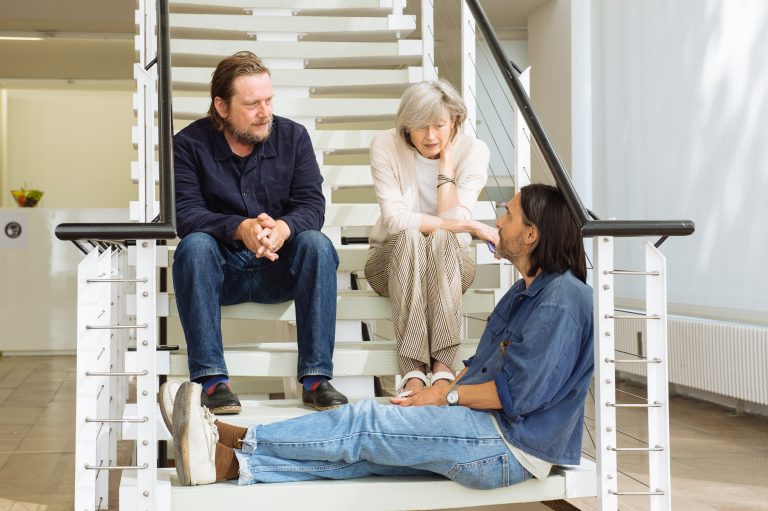
Joe and Tobias, the two of you have known each other for some time and have developed a close friendship over the years. How did your relationship begin?
Joe Bradley: I was introduced to Tobias’ paintings through Eva Presenhuber. I felt an immediate connection to the work and recognized Tobias as an authentic voice and a painter of real power and depth. I met him personally not long after at an annual gathering of gallery artists in Antiparos, Greece. We hit it off and have remained close friends since.
Tobias Pils: Painting, like friendship, is chemistry.
You both make use of figuration to varying degrees in your practice. Are there certain figures or shapes that you continually return to? Or do new ones appear in this body of work? What role does figuration play as a whole?
JB: I usually describe my work as “abstract painting” even though I know this is not entirely true. There has always been a baseline of figuration in my work, and this is very much the case in this group of paintings and drawings. The drawings are full of recognisable imagery, and taking just a quick glance at the paintings, I see a couple of faces, an elephant, a still life and some sort of alien dog.
TP: I try not to return to any given shapes or figures initially, however of course one body of work reflects the next. For me it’s about not making any habits, if something repeats itself it’s probably time to leave it behind, even though similar shapes do appear, which makes this a paradox. The body of work which I will be showing in Berlin centres around the common theme of children resting on horses.
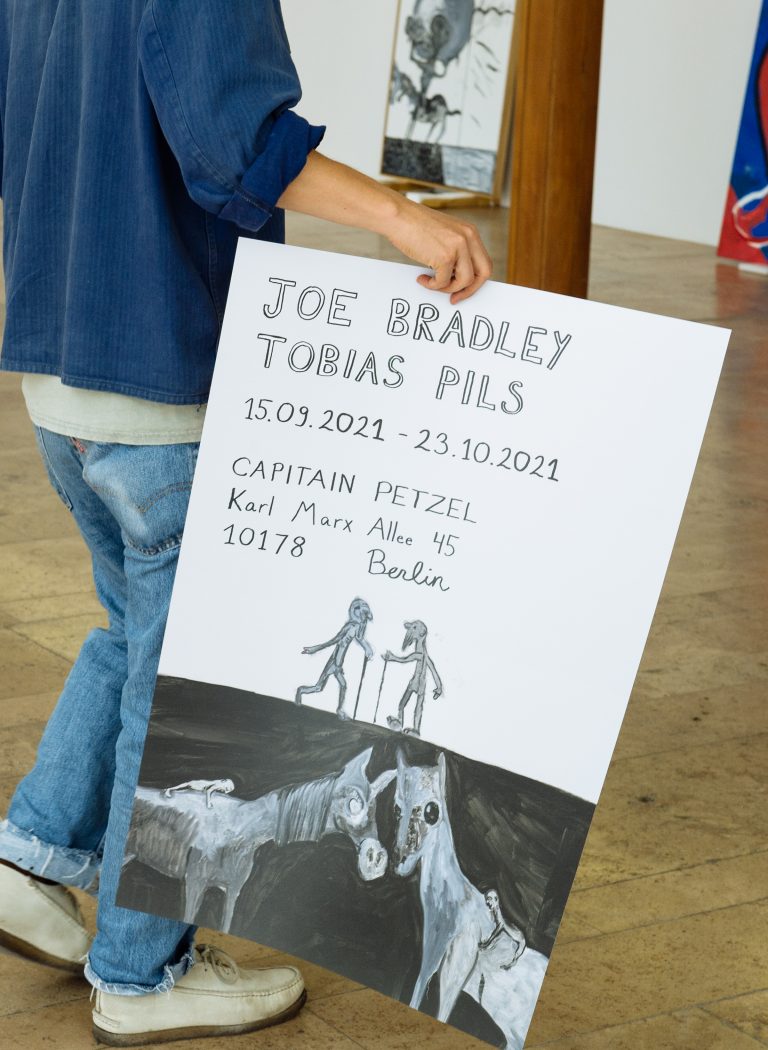
Do you consider your work to revolve more around personal and biographic elements, or are you more interested in representing existential and universal themes (or both!)?
JB: Both! I consider it all fair game and potential fodder for painting.
TP: If it’s personal it is universal.
How does narrative, or a lack thereof play into your work? Do you consider there to be a certain narrative theme running through this particular body of work?
JB: I’m not so interested in storytelling in my own work. In painting, beginning, middle and end are present on the surface and available all at once. This is what I find interesting, this rush of information one gets when standing in front of a painting.
TP: Same, I’m not interested in any storytelling. These paintings are about travelling – without a beginning, a middle, nor an end. Maybe in the end Joe is more of a figurative painter, and I’m more of an abstract one!
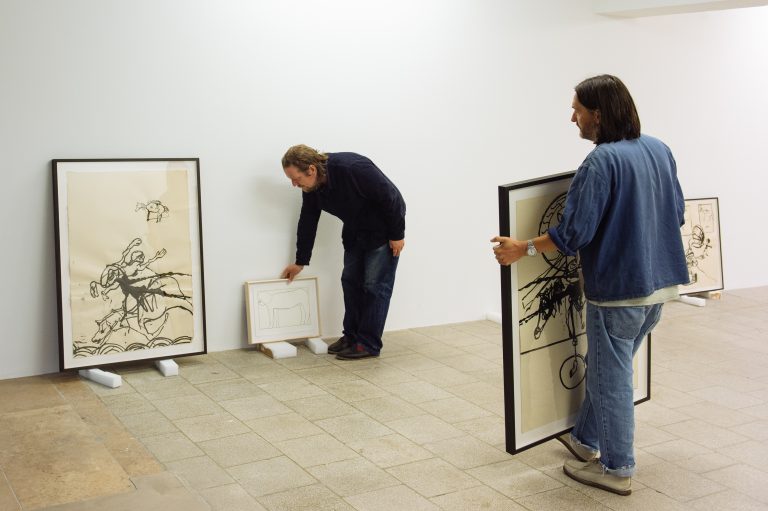
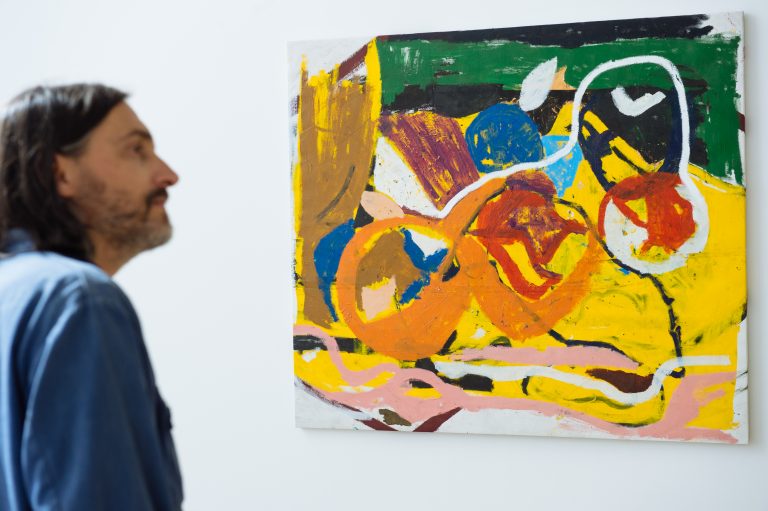
Aside from the paintings on view, the exhibition also presents new works on paper. Do these drawings function as a separate side of your practice, or do they form a part of the preparation process for subsequent paintings?
JB: The stakes are low in drawing – the materials that I work with are relatively accessible and this makes it an excellent medium to play around in. I try to maintain an “anything goes” policy when drawing. If an idea works, fantastic. And if not, it’s just paper.
TP: There are two different kinds of drawings: my pencil drawings are more often new concepts or sketches, on which I might base a painting on. Ink drawings, such as the ones in this exhibition, are more like meditations on already realised paintings.
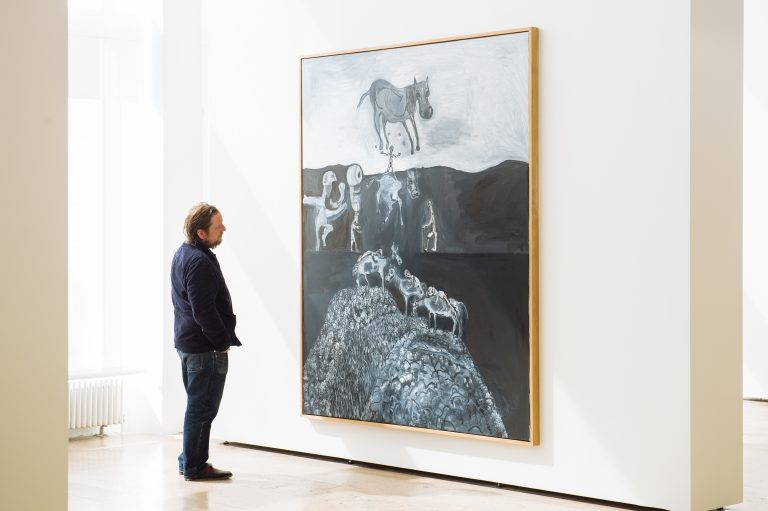
On that note, do these paintings and drawings arise out of spontaneity or strategic pre-planning and continuous editing?
JB: All three strategies are put to use at various times in the process of painting. Pre-planning in the form of day dreaming and visualization, as well as the nailing down of formal nuts and bolts concerns (material, scale etc.) Spontaneity is of course key – the ability to improvise and problem solve on one’s toes, as well as editing- knowing what and when to give up and throw out.
TP: The paintings I chose were finished in my mind’s eye before I started to work, while when I was actually getting them done I had a quite distanced and almost “conscious unconscious“ approach. However, every painting has to have its own temperature, or consciously chosen concept. For example, the painting The Rest was planned with rain in mind – although it didn’t work out that way in the end, the temperature of the painting was set by the image of rain in my head. The ink drawings, as I said before, are more like meditations on a certain theme – so the opposite, somehow. There’s hardly any editing or coming back.
Is humor a relevant factor in your practice?
JB: To build levity into a work of art seems to me an act of generosity. If the artist lets the viewer in on the joke, it may ease the sense of boredom and tension that sometimes arises when looking at art. If the viewer smiles, it will help them to relax and look with an open heart.
TP: A humorous state of mind is not present for me while working. However, the open heart that Joe speaks about is essential.
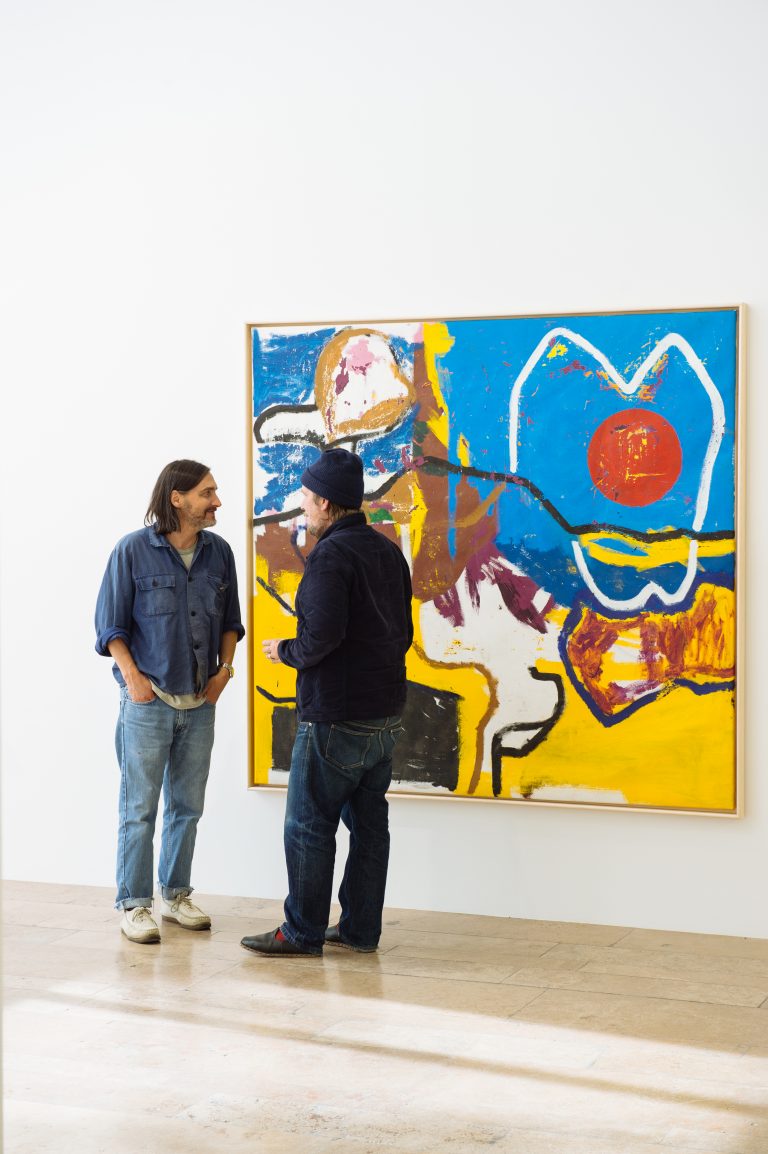
How was the process of working on this exhibition together – but separately? To what extent were you sharing your works and ideas during the actual preparation?
JB: I had a general idea of what Tobias would bring to the table for this exhibition as we had both agreed to make five or six paintings and a group of works on paper, but we didn’t share images of the work with one another until fairly late in the game. That being said, I did think quite a bit about Tobias’ work while working on my own paintings for the show, and just knowing that I would share the stage with Tobias made for a light and easy-going atmosphere in the studio.
TP: I’m only capable of painting the paintings that need to be painted after the one I did last and the one I will do next. But I knew quite early on in our friendship that I would love to see Joe’s and my work together, coming from these different backgrounds but still sharing this mutual understanding about painting itself. I loved seeing glimpses of the paintings Joe was working on during our FaceTime conversations, knowing something was going on, sensing the energy and choosing paintings of mine that I thought might correspond.
Thank you both!
Questions by Luzie Naters
